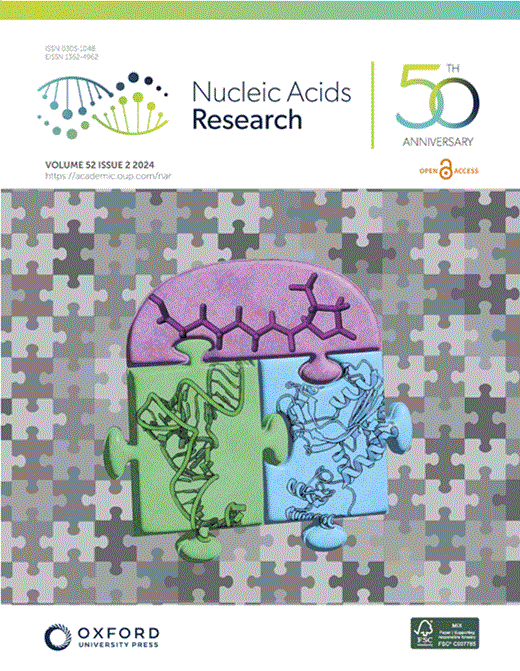Directed assembly of single-stranded DNA fragments for data storage via protein-free catalytic splint ligation
IF 16.6
2区 生物学
Q1 BIOCHEMISTRY & MOLECULAR BIOLOGY
引用次数: 0
Abstract
Oligonucleotides or gene fragments can be ligated in a specified order to create longer DNA assemblies. We present a method where DNA symbols, or oligos designed to encode information for archival data storage, are joined to linker sequences at either end. These linkers dictate the assembly order of the symbols; the order of the symbols can be changed by changing the sequences of the linkers attached to them. Utilizing a ligating DNAzyme as a catalytic splint, we achieve room-temperature, protein-free assembly, offering a cost-effective alternative to traditional enzyme-based ligation methods. We demonstrate this technique by assembling three different five-symbol constructs, with the order of the symbols determined by their linking ends. This linker directed assembly technique allows data-encoding symbols to be assembled in any desired order. Furthermore, the DNAzyme-based assembly method is versatile and can be applied to various DNA assembly applications, particularly where cost-effectiveness and efficient room-temperature ligation are required.定向组装单链DNA片段的数据存储通过无蛋白催化夹板连接
寡核苷酸或基因片段可以按特定顺序连接以产生更长的DNA组装。我们提出了一种方法,其中DNA符号,或寡核苷酸设计编码信息的档案数据存储,连接到任何一端的链接序列。这些连接器决定了符号的组装顺序;符号的顺序可以通过改变与之相连的连接体的序列来改变。利用连接DNAzyme作为催化夹板,我们实现了室温,无蛋白质组装,为传统的基于酶的连接方法提供了一种具有成本效益的替代方案。我们通过组装三个不同的五符号结构来演示这种技术,符号的顺序由它们的连接端决定。这种链接器定向组装技术允许按任何需要的顺序组装数据编码符号。此外,基于dnazyme的组装方法是通用的,可以应用于各种DNA组装应用,特别是在需要成本效益和高效室温连接的情况下。
本文章由计算机程序翻译,如有差异,请以英文原文为准。
求助全文
约1分钟内获得全文
求助全文
来源期刊

Nucleic Acids Research
生物-生化与分子生物学
CiteScore
27.10
自引率
4.70%
发文量
1057
审稿时长
2 months
期刊介绍:
Nucleic Acids Research (NAR) is a scientific journal that publishes research on various aspects of nucleic acids and proteins involved in nucleic acid metabolism and interactions. It covers areas such as chemistry and synthetic biology, computational biology, gene regulation, chromatin and epigenetics, genome integrity, repair and replication, genomics, molecular biology, nucleic acid enzymes, RNA, and structural biology. The journal also includes a Survey and Summary section for brief reviews. Additionally, each year, the first issue is dedicated to biological databases, and an issue in July focuses on web-based software resources for the biological community. Nucleic Acids Research is indexed by several services including Abstracts on Hygiene and Communicable Diseases, Animal Breeding Abstracts, Agricultural Engineering Abstracts, Agbiotech News and Information, BIOSIS Previews, CAB Abstracts, and EMBASE.
 求助内容:
求助内容: 应助结果提醒方式:
应助结果提醒方式:


